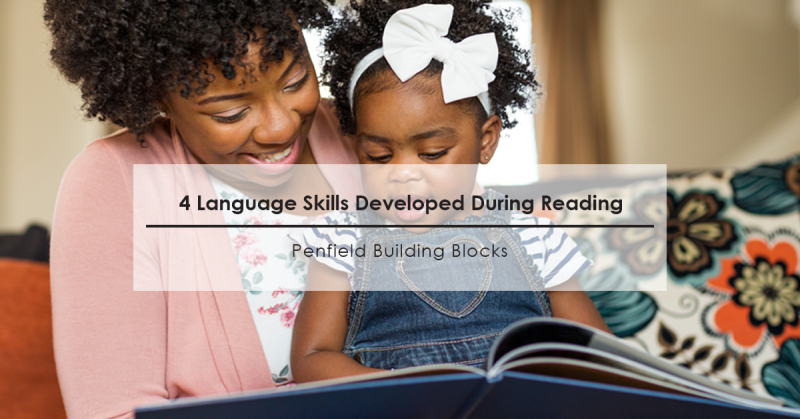What is language development?
Language development in babies and toddlers encompasses verbal and nonverbal forms of communication, skills which rapidly increase as the child grows and develops. These communication skills are broken down into two areas: receptive and expressive language. Receptive language is our ability to understand messages we hear, see and feel, while expressive language is the way we communicate our individual wants and needs.
Some examples of receptive language skills include: smiling when interacting with a caregiver, attending to the person who’s talking, and playing speech routine games like peek-a-boo. Responding to the “give me” command, and pointing to body parts when asked are also examples of receptive language skills.
Expressive language skills include: crying, cooing, laughing, whines, shaking head and “babbling”. As the child develops skills will include: saying “mama”, “dada”, “no”, “uh-oh!” and other single words. Meaningful gestures liking waving and holding arms up to be held are other examples of expressive language.
What are some ways to develop language skills?
As a parent or caregiver there are many ways to support your child’s language development. Talking, singing and reading to your child are three major ways to introduce them to language.
Talk to your child
Tell your child the things you are doing like: “I’m drinking coffee”, “I’m putting away dishes.” Talk to your child about what you think they are seeing: “you’re eating a banana” or “big yawn, you’re getting sleepy.” Talk to your child about everyday things like: “pick up your toys” or “finish your milk.”Sing to your child
Singing with your child can be a fun way to develop language skills. Sing along to the music and invite your child to do the same.Read with your child
Reading with your child helps develop both receptive and expressive language skills, along with increasing your child’s vocabulary. Plan time each day to read with your child.
4 Language Skills Developed During Reading

ATTENTION & ATTUNEMENT
Children learn how to tune in and build relationships with others during story time, an important foundation of communication. You are giving your full attention to your child during story time, which they love!

MAKING CHOICES
Children can practice making choices by choosing which of two books they would like to read. Giving them two options is an example of how you can support your child’s ability to communicate what they would like to do by either telling you with words or pointing.

COMMENTING & LABELING
While reading with your child, point to and name what you see in the pictures. Talk about what the characters are doing in the story. This helps children learn what objects are, and connects the pictures to the words in the story.

ANSWERING QUESTIONS
Asking open ended questions during story time is a great way to help children communicate and understand what is being asked of them. Open ended questions are questions that cannot be answered with yes or no. Pictures in the book can help children answer the questions you ask them.
When reading with your child, be prepared to read the same books over and over again. Children love books that are repetitive because the words are predictable, which helps them learn. Sometimes children are more interested in what is going on in the pictures than the actual story, and that is ok. They are still learning!
Language development encompasses the whole system of words and symbols we use to communicate. During the first years of life, a child rapidly develops many of these skills and sets the foundation for continuing their language journey. Reading with your child daily predicts better vocabulary and grammar skills and contributes to academic success later in life.
Read our other blogs on language development:
Typical Language Development, Birth-to-Three
Helping your child’s speech development


